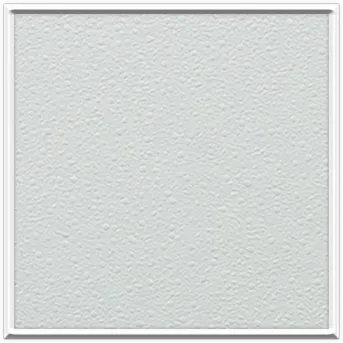Dec . 12, 2024 22:31 Back to list
Suspended Drywall Ceiling Solutions for Modern Interior Spaces and Aesthetic Appeal
Understanding Drywall Suspension Ceilings Advantages and Installation Techniques
Drywall suspension ceilings, also known as drop ceilings or false ceilings, have become increasingly popular in residential and commercial construction due to their functionality and aesthetic appeal. This type of ceiling system consists of a grid structure that is suspended from the existing ceiling, allowing panels of drywall or other materials to be placed within the framework. This article delves into the benefits of drywall suspension ceilings and provides insight into their installation.
Advantages of Drywall Suspension Ceilings
One of the main advantages of drywall suspension ceilings is their versatility. They can be tailored to fit various spaces, making them suitable for both large open areas and smaller rooms. By allowing for customized design, these ceilings can enhance the overall appearance of a space, providing a sleek and modern finish.
Another significant benefit is the ease of access they provide to the systems behind the ceiling, such as electrical wiring, HVAC ducts, and plumbing. In traditional ceiling installations, accessing these systems can be a tedious and disruptive process. However, with a suspended ceiling, panels can be easily removed and replaced, saving time and effort during maintenance and repairs.
Moreover, drywall suspension ceilings can improve acoustics in a room. Many materials used for the ceiling panels, such as acoustic tiles, are designed to absorb sound, helping to minimize noise levels. This feature is particularly valuable in commercial environments like offices, schools, and hospitals, where excessive noise can be distracting and disruptive.
Additionally, these ceilings can also contribute to energy efficiency. The air gap created between the original ceiling and the suspended ceiling can provide an insulating effect, helping to regulate indoor temperatures and reduce energy consumption. This can lead to lower heating and cooling costs over time.
Installation Process of Drywall Suspension Ceilings
The installation of drywall suspension ceilings requires careful planning and execution, but it can be accomplished by those with basic DIY skills.
drywall suspension ceiling

1. Planning and Measurement Before starting, it's crucial to measure the dimensions of the room. Determine the desired height of the ceiling and account for any changes in floor level. Sketch a layout for the grid, ensuring it is symmetrical and visually appealing.
2. Gather Materials For the installation, you will need a variety of materials including main beams, cross tees, wall angle trim, drywall panels, screws, and a suspended ceiling grid. It’s important to choose high-quality materials to ensure longevity and durability.
3. Install the Wall Angle The first step in the actual installation is to attach the wall angle around the perimeter of the room at the desired height. This angle provides a support structure for the grid and panels. Use a level to ensure it is straight.
4. Install the Main Beams Once the wall angle is in place, install the main beams of the grid system, which will be supported by wires attached to the original ceiling. Follow the manufacturer’s specifications for spacing and techniques.
5. Add Cross Tees After the main beams are installed, insert the cross tees to create a grid pattern. This will help support the drywall panels and ensure a consistent layout.
6. Hang the Drywall Panels Finally, after the grid has been completed, install the drywall panels. These can be cut to size and dropped into the grid. Ensure they are securely placed to prevent sagging.
7. Finishing Touches After the panels are hung, finishing work can be done. This may include taping and mudding the joints, painting the ceiling, and adding lighting fixtures if desired.
Conclusion
In summary, drywall suspension ceilings offer a modern and efficient solution for enhancing the aesthetics and functionality of both residential and commercial spaces. With their ability to improve access to utilities, enhance acoustics, and contribute to energy efficiency, they are a worthwhile investment for many building projects. While installation may require some effort, the benefits of a well-executed drywall suspension ceiling far outweigh the challenges. By following the outlined steps and implementing proper techniques, anyone can create a beautiful and practical ceiling that complements their space.
-
Quality Ceiling Trap Doors & Access Panels | Easy & Secure AccessNewsAug.30,2025
-
Durable Ceiling T Grid Systems | Easy InstallationNewsAug.29,2025
-
PVC Gypsum Ceiling: Durable, Laminated Tiles for Modern SpacesNewsAug.28,2025
-
Pvc Gypsum Ceiling Is DurableNewsAug.21,2025
-
Mineral Fiber Board Is DurableNewsAug.21,2025
-
Ceiling Tile Clip Reusable DesignNewsAug.21,2025







